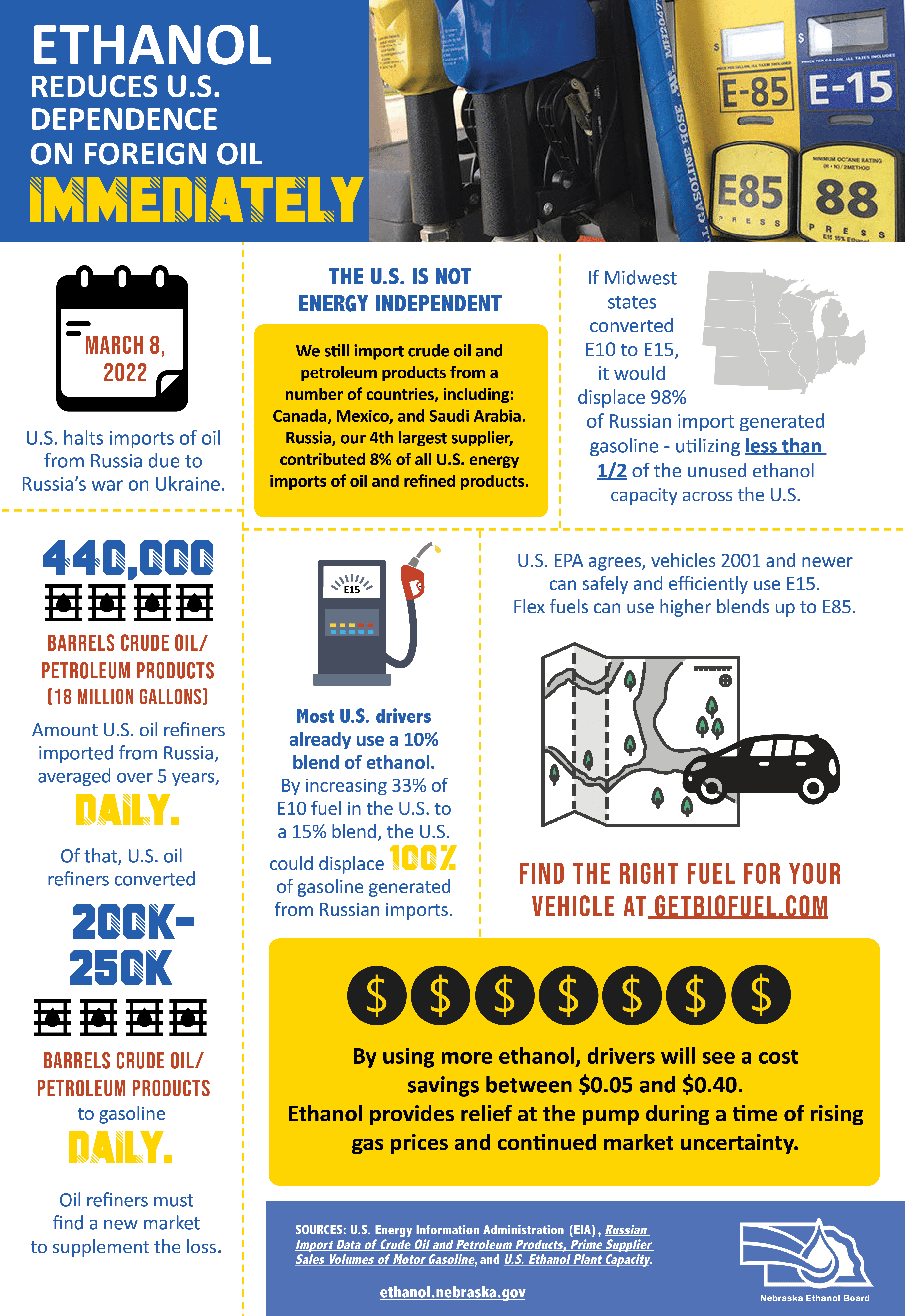Using ethanol and other alternative fuels and advanced technologies to provide diverse clean transportation options strengthens national energy security by increasing resilience to natural disasters and fuel supply disruptions.
The U.S. Department of Energy data on Nebraska’s ethanol production started in 1985 at 9 million gallons per year. Ten years later, in 1995, it was 200 million gallons. More than 10 years later, the big jump in production was 858 million gallons, and five years later, by 2011, it was 2,062 million. The 20-year growth from 1995 to 2014 was approximately tenfold. Since 2007, the effects on Nebraska’s economy and rural areas have been both sustained and substantial.
According to the U.S. Energy Information Administration, the U.S. imported 9.9 million barrels of petroleum from 80 countries in 2013. The global supply of crude oil, other liquid hydrocarbons and biofuels is expected to be adequate to meet the world’s demand for liquid fuels for at least the next 25 years; however, there is substantial uncertainty about the levels of future liquid fuels supply and demand. America needs to get more serious about finding domestic sources of energy.
In addition to the cost of purchasing imported oil, the U.S. spends about $50 billion each year for military protection of Middle East oil supplies — and billions more in government subsidies to the oil industry.


